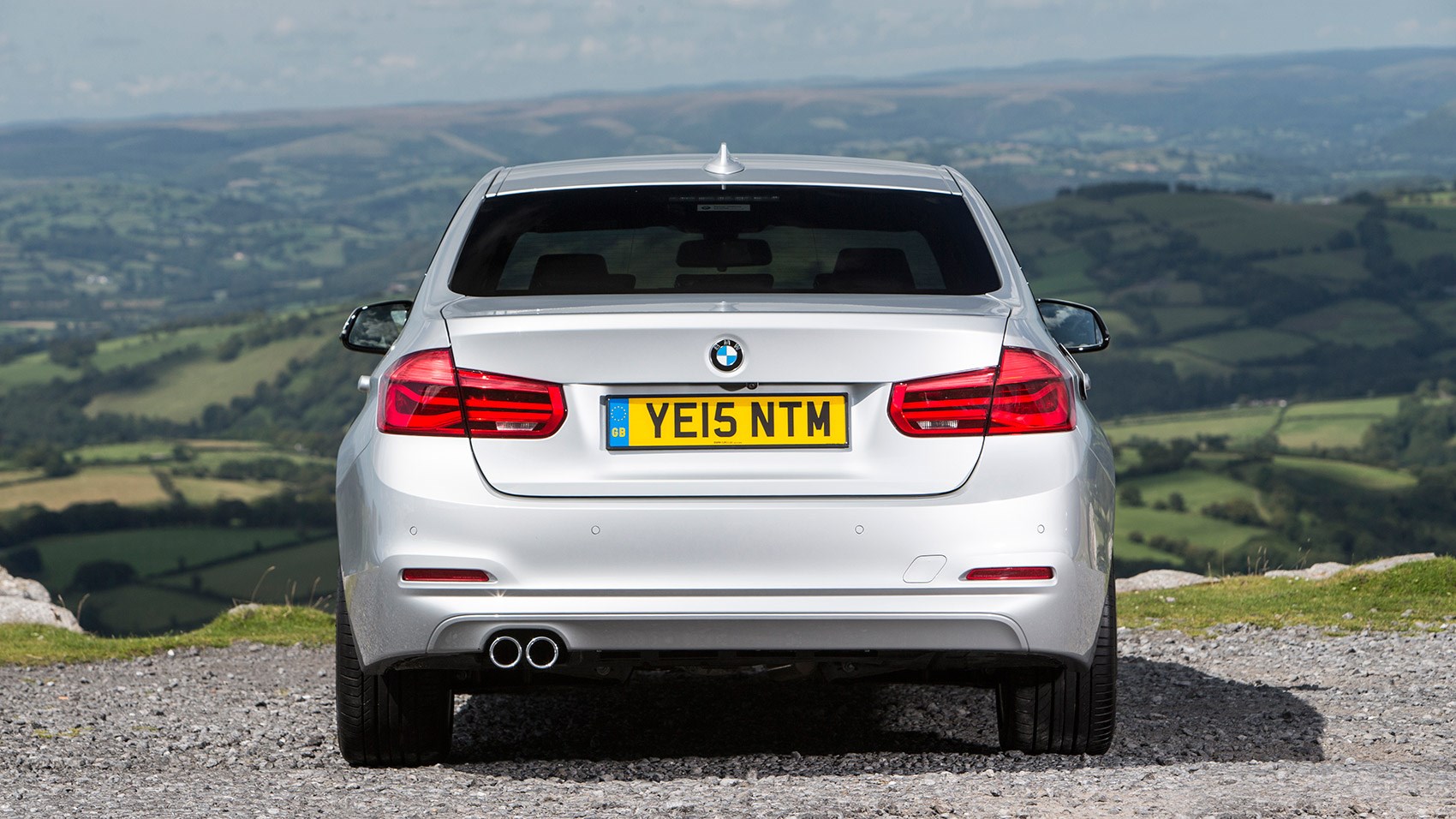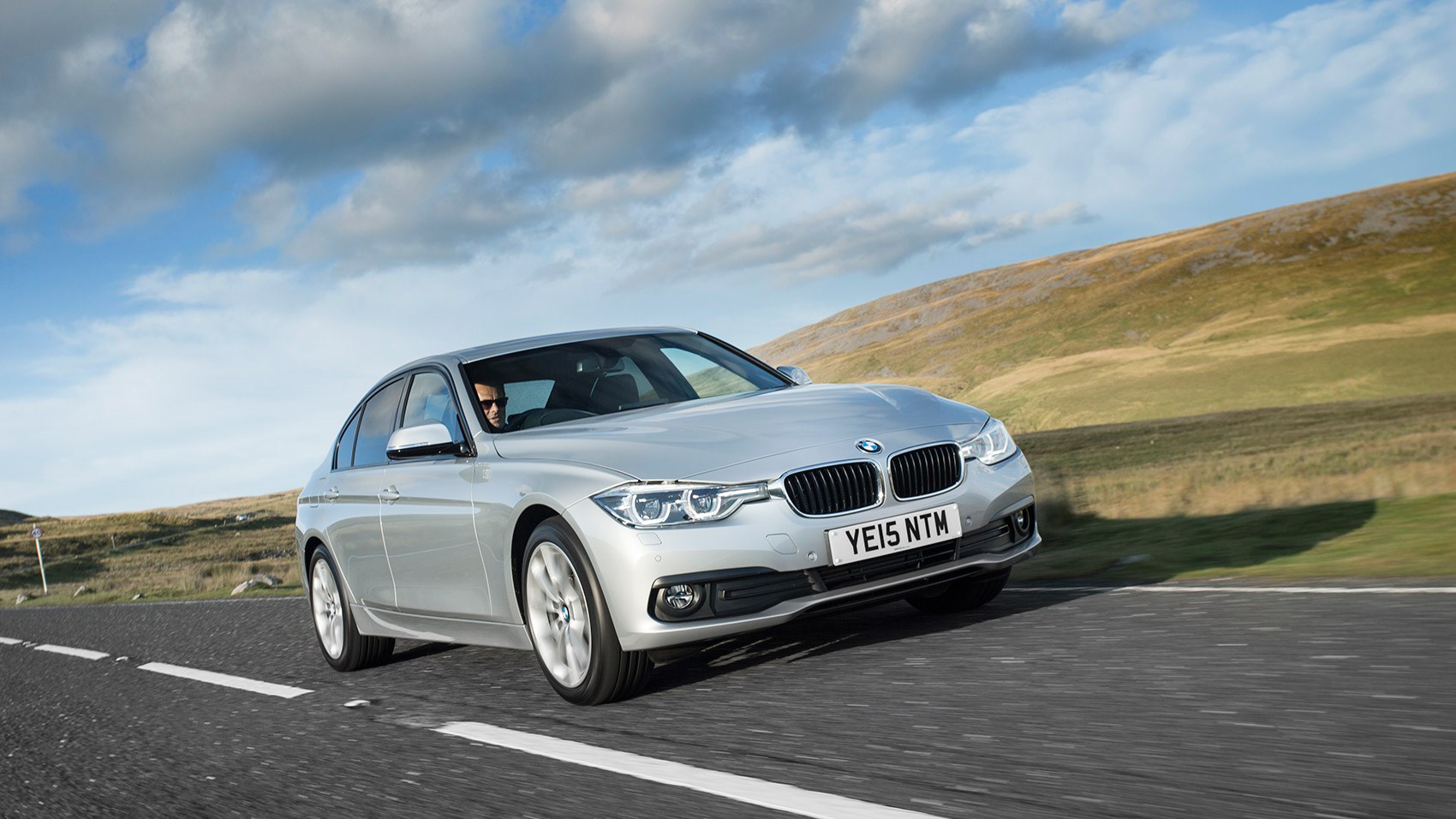► We test most popular 3-series
► Latest BMW 320d review
► Still the class benchmark?
The BMW 3-series might sit at the heart of BMW’s ultimate driving machine ethos, but it’s CO2 and mpg figures rather than 0-62mph times that are more likely to interest its company-car buyers these days. Hence the fleet-friendly 320d.
We’re testing the M Sport model in facelift trim, which makes its efficient dynamics a little more efficient, and a little more dynamic. It costs £33,350, while the base model is £30,550
What are the big changes to the BMW 3-series?
Generally this is more of a gentle finessing, but the four-cylinder modular engines are new. The 320d’s feature anti-friction bearings (the lower the friction, the lower the consumption), common-rail direct injection and VNT (Variable Nozzle Turbine) turbocharging, which more precisely controls the flow of exhaust gas through the turbocharger’s turbine wheel.
Only the four-cylinder petrols get twin-scroll turbo tech, making the TwinPower label that’s applied to all of them a little confusing. At least the 320d badge still means a 3-series with 2.0 litres of displacement.
The six-speed manual and eight-speed automatic gearboxes are also revised. The optional eight-speeder we’re testing has a wider spread of ratios (for even lower rpm top-gear cruising), and reduced torque-converter slip, for less wasted energy.
Browse BMW 3-series for sale
Compared with its predecessor you get a small 6bhp boost, and a drop in CO2 emissions of 6%. All in, the improvements translate to 187bhp, 67.3mpg and 111g/km CO2.

The Efficient Dynamics Plus model is available for £31,230, which ups the ante to as much as 70.6mpg and 104g/km, and drops Benefit-In-Kind tax from 25% to 20%. You also lose 27bhp and some status in the office car park.
Any other business?
The BMW chassis engineers have had a fiddle with the suspension and steering, the former said to be a little stiffer, the latter ‘optimised’, which is always preferable. Interestingly, the front suspension strut towers now have five bolts, up from three, and the sheet metal thickness increases from 1.6mm to 3mm. It’s all in the name of making the 3-series a more dynamic, more precise steer, perhaps a response to the rave reviews handed to the Jaguar XE’s handling.
Elsewhere, there’s some very light tweakery of the exterior with new LED head- and tail lights, and more gloss black for the neatly laid out interior. Business-spec sat-nav is standard, Professional nav optional, but really, comparing old and new inside and out is a game of spot the difference requiring extremely high levels of concentration.
How does the BMW 320d drive?
For a car so frugal, the amount of fun you can have in a 320d is almost indecent. It starts with a snugly low driving position, the leather seats offering comfort and good lateral support. The 320d’s strong grip and keen turn-in allow you to work the front tyres hard, and the excellent body control and engagingly rear-biased handling egg you on to drive it like a performance saloon, not a rep runaround.
The optional M Sport brakes (£570) fitted to our car, add to the engagement, with a nice pedal feel and strong – if not exceptional – stopping power. That the fixed calipers also look great poking out behind the alloys in blue doesn’t hurt.
The electrically assisted steering, while quick and nicely weighted, doesn’t feel as natural as it could, with a slightly artificial feel to the way assistance is added and subtracted. A Jaguar XE’s steering tune is nicer and, I think, the Brit still maintains an edge in terms of outright agility, though it’s a close-run thing, with both models excellent.

Cruise around at normal speeds and the adaptive M Sport suspension and 19-inch alloys fitted to our car result in a ride quality that’s just on the acceptable side of firm for British B-roads, while the Sport mode is too bumpy.
You might also notice the high level of road noise from the Bridgestone Potenza tyres. But it’s a set-up I’d happily live with when quicker driving is so enjoyable, and shouldn’t prove too harsh for family motoring.
The 320d’s 187bhp and 295lb ft performance figures are far from spectacular, but the little four cylinder delivers plentiful low- to mid-range punch so you can really get a shift on cross-country and have fun pushing the chassis.
There’s a real energy to the way it picks up speed, especially when you select Sport mode to pep up the throttle response. You could hardly call the engine silky, and there’s the usual light clatter at idle, but it is one of the better four-cylinder diesel units in terms of refinement.
Verdict
The BMW 320d always was a very good car, but the incremental polishing given to this mid-life facelift model makes it even better. In M Sport trim, it’s a genuinely desirable-looking car, one that feels special inside too with its gloss-black trim and leather sports seats.
There’s generous room for the family, it’s well equipped with sat-nav as standard, and its promise of 67.3mpg means a real-world mid-50s mpg should be on the cards. That it’s so enjoyable to drive on the way home from a tedious business meeting makes it one of the most rounded, most satisfying cars you can own.
More BMW reviews by CAR magazine